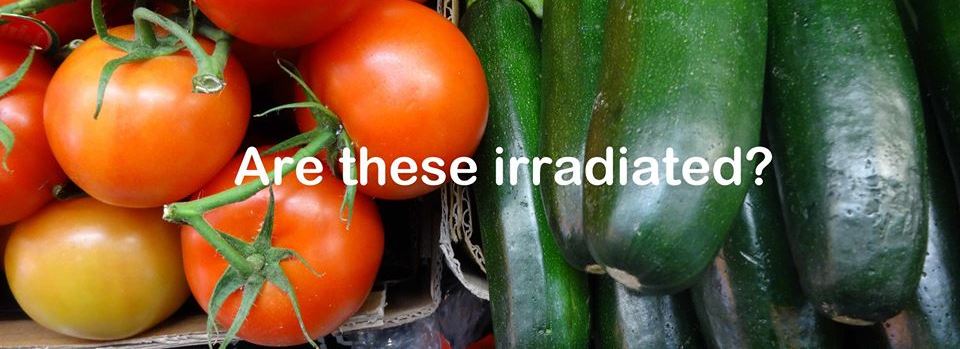Food Irradiation Labelling Under Threat
Your say: should irradiated food be labelled?
Despite labelling being the global norm and the public demand for labelling, the government is considering removing mandatory labelling requirements for irradiated food.
Make a Submission Now! Tell the Government NO to removing labelling!
CLICK HERE
Ministers responsible for food regulation have asked Food Standards Australia New Zealand (FSANZ) to review Standard 1.5.3 – Irradiation of Food, specifically to:
- assess the need for the mandatory labelling requirement for all irradiated food to continue, and
- assess whether there is a more effective approach to communicate the safety and benefits of irradiation to consumers.
The words are telling. Labelling has been identified as an impediment to the “uptake” of food irradiation, a process unfamiliar to most Australians and New Zealanders. Once prohibited in Australia and New Zealand, irradiation is now being promoted here – primarily as a quarantine treatment – as a replacement for some post-harvest chemicals. Irradiation, however, brings its own risks to the table.
So far, FSANZ has approved: herbs, herbal infusions, spices, tomatoes, capsicums, mangoes, pawpaws, mangosteens, carambolas, breadfruit, litchis, rambutans, longans, custard apples, apples, apricots, cherries, nectarines, peaches, plums, honey dews, rockmelons, strawberries, table grapes and zucchini and squash. An application for the irradiation of raspberries and blueberries is currently being processed.
The irradiation of fruits and vegetables typically involves their exposure to the energy equivalent of between 1.5 and 10 million x-rays. When used as a fruit fly “treatment”, food irradiation also extends shelf life, sanitises, and alters the nutritional value of the treated foods. Changes made to fruits and vegetables as a result of processing with irradiation are substantial and significant – and cannot be discerned with our ordinary senses.
Consumers cannot rely on taste, smell, texture or appearance to determine if a food has been irradiated. Labelling is the only mechanism that allows shoppers to exercise their preference for fresh produce. The removal of labelling from irradiated fruits and vegetables would, therefore, create a situation where the public is led to false, misleading and deceptive conclusions as to the nature of these foods – believing them to be fresh when they are, in fact, processed.
With known nutritional impacts and possible health risks associated with irradiation, removal of labelling could also impact on our right to make well-informed food buying decisions that potentially impact on our diet and health.
Labelling is the norm globally and people want irradiated food to be labelled.
It is of great concern that our food regulator is considering making the public less informed about irradiation by removing the labelling requirement.
Why should Australians and New Zealanders be kept in the dark?
Recent approvals for commonly eaten fruits and vegetables significantly increase the proportion of irradiated foods in the average Australian and New Zealand diet, increasing the need for strong labelling laws.
It is clear that the industry is keen to increase the amount of food it irradiates and sees labelling as standing in the way to consumer acceptance.
The removal of mandatory labelling of irradiated foods is also likely to be considered a litmus test for the removal or lack of labelling other novel foods- foods using new technology – such as GMOs or Nanotechnology.
We cannot allow the government/our food regulator to collude with industry to keep us in the dark re irradiated or other novel foods. We must demand that mandatory labelling remain and be improved.
What can I do?
All citizens are entitled to participate in the labelling review. Food Irradiation Watch has prepared some resources to assist you develop a position and make your own submission to the review. The review will accept submissions up until the 29th of March deadline.
FSANZ has now published its “consultation paper” and is inviting public input through an online questionnaire. You can read the official documents here, or you can use the Food Irradiation Watch materials below to prepare your submission:
Submission Tools:
- How to make a submission to the review process
- Food Regulations Ministerial Council – Complete Address List
- Food Labelling review sample submission – WORD DOC format
- Food Labelling review sample submission – PDF format
Further Reading and Information to Assist in Constructing Your Submission Argument:

